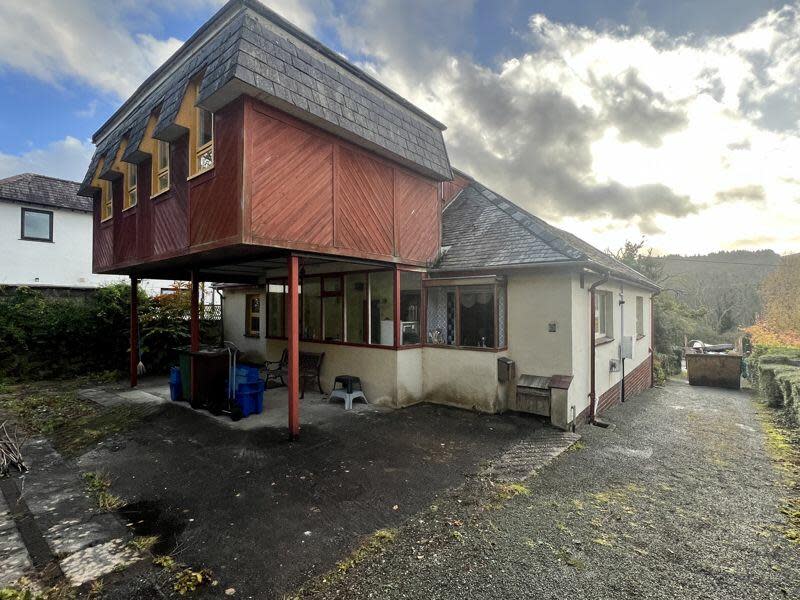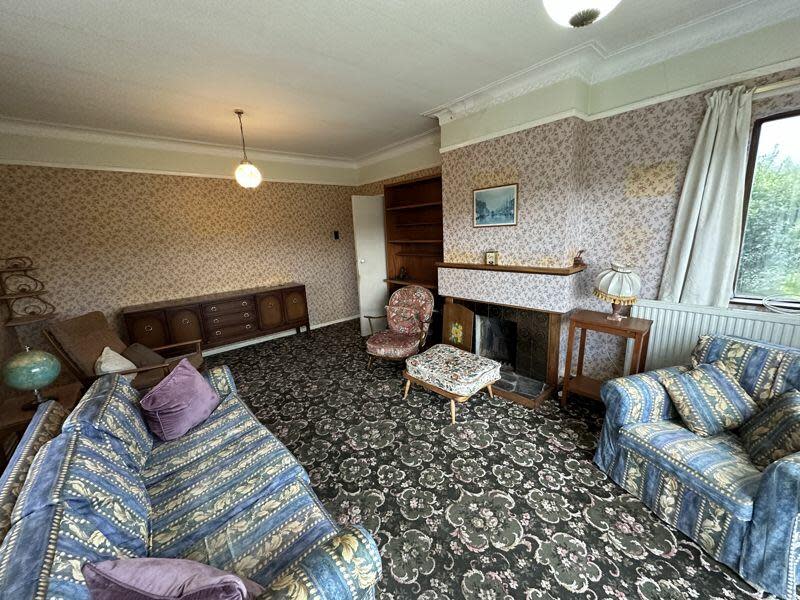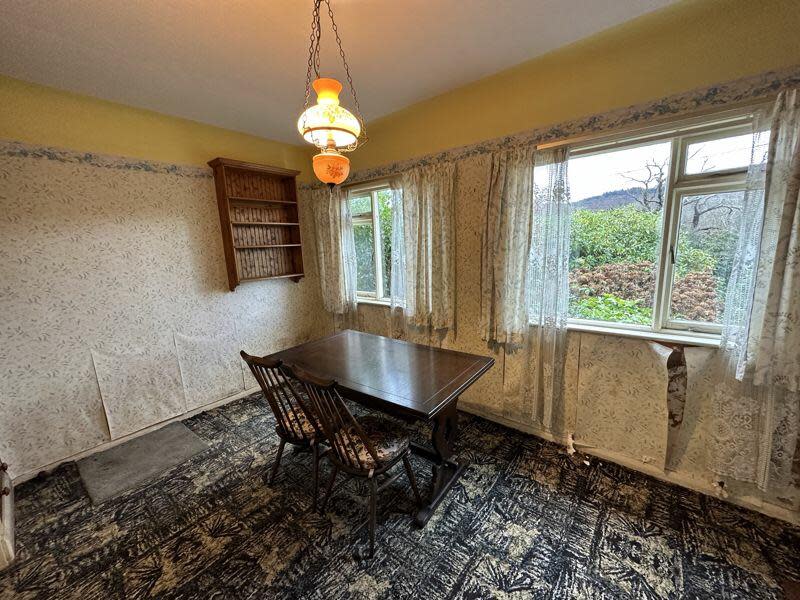Welsh bungalow with 'monstrously bad' extension for sale for £285k

It was already a fairly unusual listing, with retro, floral-patterned wallpaper and furniture making this cottage look like something plucked straight from the 1970s.
But the noteworthy extension, held up from the ground with three long rods, effectively adding another level to the property, really sets this home apart.
Pictures of the cottage in Bethesda, Gwynedd, North Wales, raise the question if you can even still class it as a bungalow, given the extension, which has a reddish exterior that couldn't match the white facade of the original property any less.
The cottage, listed on Rightmove as an "unusual detached residence requiring renovation", is available to buy for £285,000. While the listing accepts a fair bit of work is needed, it touts the home's "large easily accessible loft with further expansion potential".
If 70s kitsch is your thing, this could already be the ideal place for you, with a kitchen full of wood-panelled walls, and some pretty "out-there" patterns on the living room's carpet, walls and furniture that don't all necessarily go together.

Writing on X, formerly Twitter, an account dedicated to bad planning decisions wrote: "Business in the front, one hell of a party in the back!". A professional home inspector replied: "Have inspected over 50,000 homes in 10 states. Can say for sure I have never seen a frame mansard addition on 4x4 metal stilts."
A planning lawyer commented: "What on God’s Green Earth is this? What was the brief? It so monstrously bad I’m slightly impressed."
"'Unusual detached property’ is one of the biggest understatements I’ve ever read," wrote another follower, while another asked: "How would you even get a mortgage on this and what in God's name makes them think they can ask that much for this?"
"'A real good renovation opportunity’ more a demolition opportunity. How did it get planning, or indeed, building regs?", another asked.

What are the rules on building house extensions in the UK?
There are some circumstances where you can undertake an extension on your home without needing to get planning permission from the council, under something called "permitted development rights".
Single-storey rear extensions can come out by up to three metres for semi-detached, terraced and link-detached homes, and by four metres for a detached house, the Homeowners Alliance says. This is based on the original plans of the building, or as it stood on 1 July 1948 if older.
However, some height restrictions apply here, for example, a single-storey extension cannot be higher than 4m to the ridge and the eaves, and the ridge height of an extension cannot be higher than the existing property.
Double-storey extensions must not be closer than seven metres to the rear boundary, says the alliance, adding that extensions must be built with similar materials to the existing property.
Guidance from the government says: "This means that the materials used should be of similar visual appearance to those in the existing house, but does not mean that they need to be the same materials."
If you're planning an extension that doesn't meet the above criteria, it's likely you will have to apply for planning permission from your local council. You can find more details on how to do this, here.
In general, planning permission is required for any building work that involves an extension that is more than 50% of the original size of the house or more than four metres in height," according to Abbey Extensions. This can vary depending on location and size, with homeowners in densely populated London facing more stringent regulations.
Read more
Meet the designers using revolutionary new eco materials (Elle Decoration)
21 reasons people don’t want to buy your home (LovePROPERTY)
Net zero cowboys preying on homeowners, Trading Standards warns (The Telegraph)



